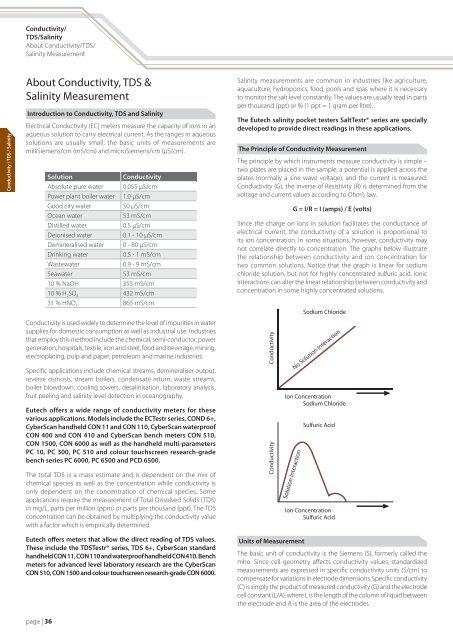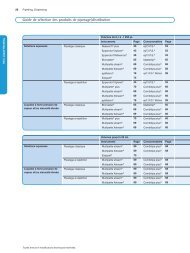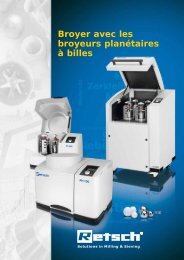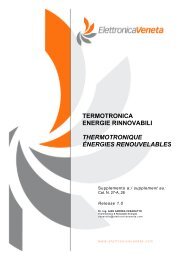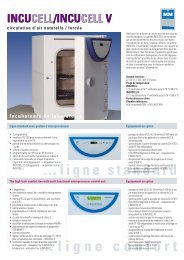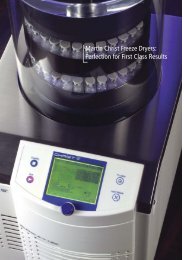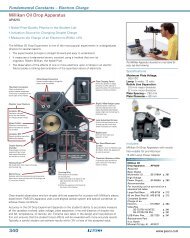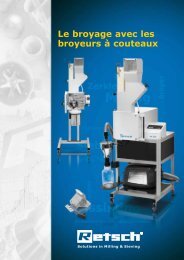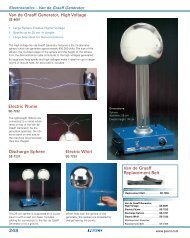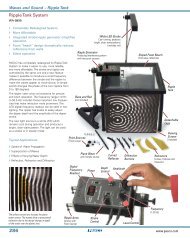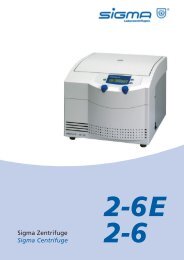Conductivity/Total Dissolved Solids/Salinity - electronical@menara ...
Conductivity/Total Dissolved Solids/Salinity - electronical@menara ...
Conductivity/Total Dissolved Solids/Salinity - electronical@menara ...
You also want an ePaper? Increase the reach of your titles
YUMPU automatically turns print PDFs into web optimized ePapers that Google loves.
<strong>Conductivity</strong>/TDS/<strong>Salinity</strong>About <strong>Conductivity</strong>/TDS/<strong>Salinity</strong> Measurement<strong>Conductivity</strong> / TDS / <strong>Salinity</strong>About <strong>Conductivity</strong>, TDS &<strong>Salinity</strong> MeasurementIntroduction to <strong>Conductivity</strong>, TDS and <strong>Salinity</strong>Electrical <strong>Conductivity</strong> (EC) meters measure the capacity of ions in anaqueous solution to carry electrical current. As the ranges in aqueoussolutions are usually small, the basic units of measurements aremilliSiemens/cm (mS/cm) and microSiemens/cm (µS/cm).Solution<strong>Conductivity</strong>Absolute pure water 0.055 µS/cmPower plant boiler water 1.0 µS/cmGood city water50 µS/cmOcean water53 mS/cmDistilled water0.5 µS/cmDeionised water0.1 - 10 µS/cmDemineralised water 0 - 80 µS/cmDrinking water0.5 - 1 mS/cmWastewater0.9 - 9 mS/cmSeawater53 mS/cm10 % NaOH 355 mS/cm10 % H 2 SO 4 432 mS/cm31 % HNO 3 865 mS/cm<strong>Salinity</strong> measurements are common in industries like agriculture,aquaculture, hydroponics, food, pools and spas where it is necessaryto monitor the salt level constantly. The values are usually read in partsper thousand (ppt) or % (1 ppt = 1 gram per litre).The Eutech salinity pocket testers SaltTestr® series are speciallydeveloped to provide direct readings in these applications.The Principle of <strong>Conductivity</strong> MeasurementThe principle by which instruments measure conductivity is simple –two plates are placed in the sample, a potential is applied across theplates (normally a sine wave voltage), and the current is measured.<strong>Conductivity</strong> (G), the inverse of Resistivity (R) is determined from thevoltage and current values according to Ohm’s law.G = I/R = I (amps) / E (volts)Since the charge on ions in solution facilitates the conductance ofelectrical current, the conductivity of a solution is proportional toits ion concentration. In some situations, however, conductivity maynot correlate directly to concentration. The graphs below illustratethe relationship between conductivity and ion concentration fortwo common solutions. Notice that the graph is linear for sodiumchloride solution, but not for highly concentrated sulfuric acid. Ionicinteractions can alter the linear relationship between conductivity andconcentration in some highly concentrated solutions.<strong>Conductivity</strong> is used widely to determine the level of impurities in watersupplies for domestic consumption as well as industrial use. Industriesthat employ this method include the chemical, semi-conductor, powergeneration, hospitals, textile, iron and steel, food and beverage, mining,electroplating, pulp and paper, petroleum and marine industries.Specific applications include chemical streams, demineraliser output,reverse osmosis, stream boilers, condensate return, waste streams,boiler blowdown, cooling towers, desalinisation, laboratory analysis,fruit peeling and salinity level detection in oceanography.Eutech offers a wide range of conductivity meters for thesevarious applications. Models include the ECTestr series, COND 6+,CyberScan handheld CON 11 and CON 110, CyberScan waterproofCON 400 and CON 410 and CyberScan bench meters CON 510,CON 1500, CON 6000 as well as the handheld multi-parametersPC 10, PC 300, PC 510 and colour touchscreen research-gradebench series PC 6000, PC 6500 and PCD 6500.The total TDS is a mass estimate and is dependent on the mix ofchemical species as well as the concentration while conductivity isonly dependent on the concentration of chemical species. Someapplications require the measurement of <strong>Total</strong> <strong>Dissolved</strong> <strong>Solids</strong> (TDS)in mg/L, parts per million (ppm) or parts per thousand (ppt). The TDSconcentration can be obtained by multiplying the conductivity valuewith a factor which is empirically determined.Eutech offers meters that allow the direct reading of TDS values.These include the TDSTestr® series, TDS 6+, CyberScan standardhandheld CON 11, CON 110 and waterproof handheld CON 410. Benchmeters for advanced level laboratory research are the CyberScanCON 510, CON 1500 and colour touchscreen research-grade CON 6000.Units of MeasurementThe basic unit of conductivity is the Siemens (S), formerly called themho. Since cell geometry affects conductivity values, standardizedmeasurements are expressed in specific conductivity units (S/cm) tocompensate for variations in electrode dimensions. Specific conductivity(C) is simply the product of measured conductivity (G) and the electrodecell constant (L/A), where L is the length of the column of liquid betweenthe electrode and A is the area of the electrodes.page | 36


